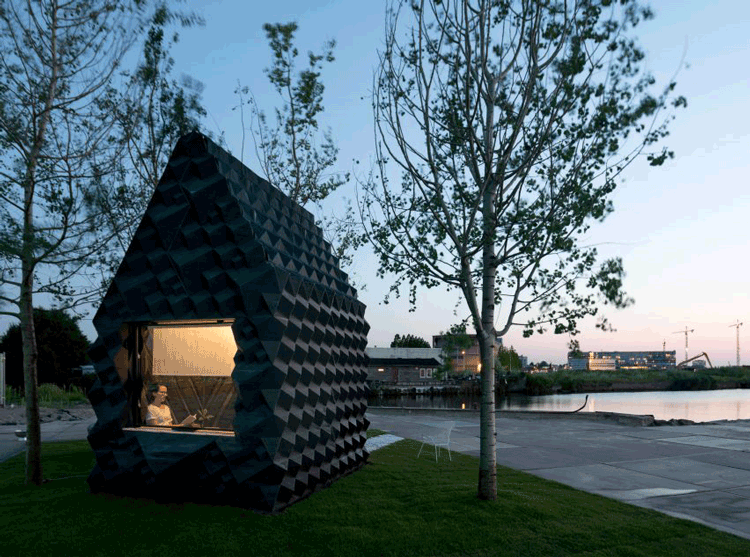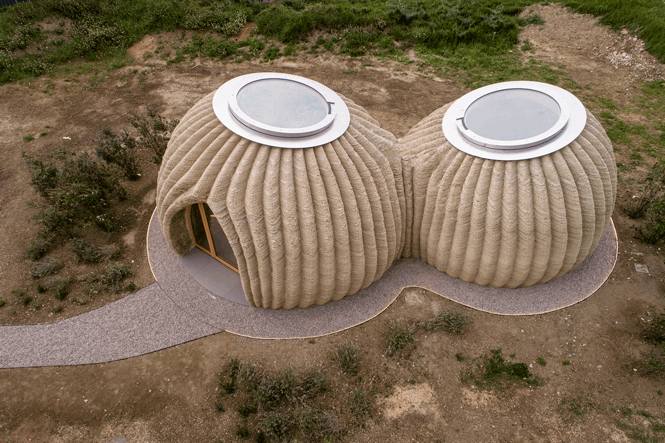The evolution of building materials has been quite an eventful journey. Across history and civilizations, new building materials have made their mark. This transition has resulted in immense possibilities, from using hay, tree barks, stone, timber, brick, mortar, or glass and steel. Materials have a great influence on the experiential quality of a space. In this process, different materials started to use in 3d printers. Today, we can create 3D-printed houses by using these technologies. Different materials provide a different range of thermal and acoustic comfort. Materials also vary based on the region and the specific climatic conditions. The variations in building materials thus strengthen the thought that “Change is the only constant”.
For instance, the brick alone has undergone multiple evolutions. It has evolved from clay and sand bricks to fly ash bricks, hollow wooden bricks, etc. Thus, the genre of materials is very deep. Moreover, technological innovations have led to unconventional techniques and materials. This not only reduces the environmental impact but also increases the life span and strength of the building. This includes using materials like Bamboo, Reclaimed Wood, Recyclable Waste, Bitumen Materials, Tempered Glass, Crumb Rubber, etc. This list also includes new-age materials like Fiber Reinforced Polymer, Glass Fiber Reinforced Plastics, Bamboo reinforced plastics, etc. But 3D printed houses are the latest and most jaw-dropping innovation of the current times.
Yes, this is not just a technological marvel in the AEC industry but also the printing technology. But what has made 3D printing a new trend in the AEC industry?
Let’s have a glance.
How is 3D Printing Technology Growing in the AEC Industry?
A construction 3D printer employs a machine that builds houses by stacking the building material. This type of construction is termed “Construction 4.0”. In this technique, a paste material ejected through a tube. This includes materials like concrete or earth stacked in layers, thus creating a spatial volume.
This technology helps save time, effort, and material compared to traditional construction methods. But, 3D printing limited to the printing of walls and frames. Later, systems like windows, plumbing, etc., are conventionally installed. Despite these limitations, the technology is gaining traction owing to the minimal time required by the technology. This eliminates the time spent setting deep foundations, concrete settings, and other time-consuming methods involved in traditional constructions.
3D Printed Homes Across the Globe
Now that we have seen the potential of 3D printing in architecture and the advantages of 3D-printed construction, let us check out some 3D-printed homes that have pivoted the idea of housing technology worldwide.
Here’s an insightful list:
1. Bio-plastic micro-home
This marvelous cabin structure was designed by DUS Architects using sustainable bio-plastics and is located in the Netherlands. Bio-plastic used as a core material to print and construct this 8 sq. meter. Micro cabin, a form of additive manufacturing typically used in household 3D printers, to create its geometric walls. The Bio-plastic can be easily recycled and repeatedly reprinted. Using this method makes this project environment-friendly in the true sense. The use of black material renders this micro cabin with a customizable and ornamental facade. This cutting-edge design show how it is strategically conceptualized to induce form optimization.
Moreover, bioplastic makes the micro cabin naturally insulated, eliminating the need for mechanical ventilation. This also highlights the innovation in materiality and energy consumption. The modular interiors also feature a plush 3D-printed bathtub, whereas the porch and steps in concrete open up the cabin into the park. Thus, creating an aesthetic transition between the built and the unbuilt.
2. Tecla
In collaboration with 3D-printing specialists WASP, Italy-based studio Mario Cucinella Architects has developed this low-carbon impact housing prototype, which goes by the name Tecla. A spatial enclosure formed by two connected domes with a total area of about 60-square-meters. The large skylight at the top of each dome allows light to penetrate the space from the top, making the space well-lit naturally.
The combination of modern technology, locally-sourced clay as the building material, and the multileveled 3D printer showcases the intersection of functionality and aesthetics.
3. Two-Story Detached House
Two-Story Detached House is the first-ever 3D-printed house in Germany. It has a two-storied structure with approximately 860 sq. ft of habitable space per floor. This project is being built using the 3D printer called BOD2. It pioneered by Danish manufacturer COBOD. The key feature of this machine is that it facilitates the addition of pipes and other internal building service components while the printing is underway. Moreover, it can print up to 10 sq. ft of double-skin wall in a magical span of just 5 minutes.
Read more What is Concrete 3D Printing?
4. Project Milestone
Designed as part of a design development that aims to be the world’s first 3D-printed rental property, this structure has become the first lived-in 3D-printed home in Europe.
This boulder-shaped home was designed by Studio Houben & Van Mierlo. It was developed as part of a research project with the Eindhoven University of Technology. The whole construction process has been a new learning experience, thereby broadening knowledge around the production of 3D-printed homes.
5. Gaia
Printed using a mixture of local soil, chopped straw, and rice husks obtained from rice waste production. This 30-square-meter house is situated in Italy and was constructed by WASP.
A unique amalgamation of 3D printing technology and traditional construction method can be seen here, where the structural walls are printed from the soil. At the same time, the cavities are filled with rice waste for better insulation. Rice husks are also being used in the interior to cover the walls and ceiling of the house as a form of natural plaster.
This inspirational design proves that agricultural waste could become a major construction and 3D printing resource, making this process sustainable.
6. East 17th Street Residences
East 17th Street Residences are designed to withstand extreme weather conditions in the US.
The construction was accomplished in 7 days. This includes a configuration of two-, three- and four-bedroom residences. So far, these cement-based homes have withstood an earthquake of magnitude 7.4 and severe winter storms. This shows how 3D printing construction is reliable and can withstand environmental disasters.
7. Casa Covina
Casa Covina was designed as a design experiment in the San Luis Valley. The structure is formed by the interconnection of three cylindrical volumes or vaulted structures.
The hut was conceptualized to facilitate the co-existence of two individuals considering the coronavirus-led social distancing and isolation requirements. The adobe walls of Casa Covina are built using sand, silt, clay, and water are used to build. The structure is printed using a three-axis Selective Compliance Articulated Robot Arm.
The key highlight here is an inflatable pink roof which can be erected if it rains or snows. This great example of combining modern and ancient technology to create sustainable habitable solutions.
8. Two-storey home, Belgium
This two-storied house in Belgium is one of the first 3D-printed houses as one piece. Located in Westerlo, this home is eight meters tall and has a floor area of 90-sq.meters. The structure showcases the enhanced potential of 3D printing technology.
Designed as a low-energy consumption home, the design integrates energy-efficient provisions like ceiling and underfloor heating, solar panels, and a heat pump.
9. PassivDom House
PassivDom House is probably among the most sustainable and energy-efficient 3D-printed houses. The entire house is designed to harness solar power. Whereas, from the moisture in the air, water generation is accomplished. This acts as an add-on facility. Built using a huge 3D printer in a factory in Nevada, PassivDom House is a perfect example of futuristic housing.
Furthermore, to clean and recycle water, the bathroom is designed technologically powered. Designed to use as few resources as possible, the house is ‘Off-grid’ in the true sense.
10. Curve Appeal
Curve Appeal is a dynamic 3D-printed house built from 3D-printed plastic, carbon-fiber panels, and glazed walls. The free-flowing forms and the parametric facade inculcates this structure with incredibly bold imagery compared to the other 3D-printed homes in the world. WATG designs this 1,000-square-foot residence. This structure printed using Branch Tecnchology’s freeform process and is the first of its kind. The dynamic curved facade is aesthetic and designed with optimum structural stability. The glazed facade lets light into the interiors, making the space naturally -lit. Moreover, the use of glass as a facade also induces a sense of transparency, merging the indoors with the outdoors. The entire structure is known for its net-zero energy.
The path-breaking revolutionary construction techniques coupled with innovative technologies such as solar carving and passive mechanical systems thus make Curve Appeal futuristic in the true sense.


































Leave a comment